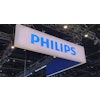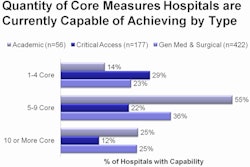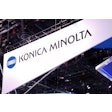Technologies to reduce radiation dose from medical imaging procedures will be highlighted in the RSNA booth of GE Healthcare of Chalfont St. Giles, U.K.
At the top of the list is the company's adaptive statistical iterative reconstruction (ASIR) technology, which can reduce dose for CT studies by 40% to 50%. The company said that ASIR is now running on more than 450 scanners worldwide, it's being used on more than 10,000 patients per day, and more than 1.5 million ASIR exams have been performed to date. ASIR is available on GE's Discovery CT750 HD and LightSpeed VCT scanners.
At the RSNA meeting, GE will also emphasize workflow enhancements made possible by Gemstone spectral imaging, a dual-energy imaging technique on the Discovery CT750 HD.
Lower radiation dose will also be top of mind in the nuclear medicine section of GE's booth, where the company will highlight the effects of ASIR on both PET/CT and SPECT/CT scanners. ASIR is available on both the Discovery PET/CT 600 line of scanners and the Discovery NM/CT 570c SPECT/CT unit.
Meanwhile, look for the company to demonstrate the benefits of the Alcyone technology used on its Discovery NM 530c and Discovery NM 570c gamma cameras, which enable users to benefit from either a fourfold reduction in procedure time or radiopharmaceutical dose.
Also in PET, GE will emphasize SharpIR, an iterative reconstruction enhancement for the company's Vue Point HD and Vue Point FX reconstruction engine on the Discovery PET/CT 600 scanner line. On the radiopharmacy side, look for the company to discuss TracerCenter 710S, a new economical lab for customers establishing their own oncology radiotracer supply for research, production, or distribution.
In the realm of MRI, look for GE to highlight Continuum Pak 22.0, a new clinical applications package on the company's 1.5-tesla Optima MR450w scanner. GE will also be updating its Propeller motion compensation package with the launch of Propeller 3.0, which reduces susceptibility artifacts in MR brain exams. Meanwhile, Inhance 2.0 is a suite of MR angiography techniques that do not require the use of contrast media.
Finally, MR-Touch is an MR elastography protocol based on research conducted at the Mayo Clinic in Rochester, MN. It detects the elastic properties of tissue -- which can be a sign of malignancy -- by measuring low-frequency mechanical waves generated in the body through an external acoustic driver.
In interventional imaging, GE will highlight several applications on its Innova angiography systems. Innova Vision overlays a 3D rotational x-ray, CT, or MR image on a 3D fluoroscopy image to create a single fused roadmap display. GE believes the technique can help physicians manipulate guidewires, catheters, coils, and devices more confidently by visualizing them on the 3D model in real-time.
Another technique, Innova TrackVision, helps interventionalists plan the skin entry point and the needle path, and monitor needle advancement in real-time on one axis for greater confidence. Innova with Blended Roadmap helps users navigate in complex anatomy by superimposing any digital subtraction angiography (DSA) or InnovaBreeze bolus image with fluoroscopy.
Meanwhile, Innova with Subtracted 3D lets users visualize vessels without having to remove surrounding bone, tissue, and implanted devices, and it also lets users visualize side-by-side nonsubtracted 3D, subtracted 3D, or 3D mask images to compare, merge, and analyze complementary images.
Finally, GE's Advantage Workstation VolumeShare 4 software enables users to visualize images from multiple modalities on GE's Advantage Workstation. It supports the integration of 3D images from Innova 3D and Innova CT applications, as well as other imaging modalities for image-guided interventional therapy.
In healthcare IT, GE will tout version 3.2 of its Centricity PACS software. The new release incorporates feedback from GE customers, and it includes integration with Centricity Enterprise Archive 4.0 and Centricity Precision Reporting. Optional enhancements include a Web-based diagnostic viewer with embedded maximum intensity projection (MIP)/multiplanar reformatted (MPR) reconstructions, support for the company's Advantage Workstation Server advanced visualization clinical applications, and VMware server virtualization.
Meanwhile, GE's Image Exchange software is designed to promote document and image sharing between diverse groups of providers across a community.
The company also plans to highlight advancements in ultrasound, with a special emphasis on miniaturized ultrasound scanners, and in digital x-ray, with GE hinting at an expansion of its digital detector technology.
By Brian Casey
AuntMinnie.com staff writer
November 16, 2010
Related Reading
GE touts Omnipaque taste test, November 10, 2010
GE to continue health academy support, November 9, 2010
GE wins 7T Wis. MRI contract, November 5, 2010
GE inks consulting deal with West Physics, November 4, 2010
GE shows MRI options, software at ASTRO, November 3, 2010
Copyright © 2010 AuntMinnie.com



















